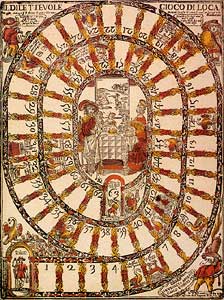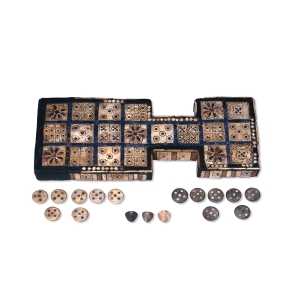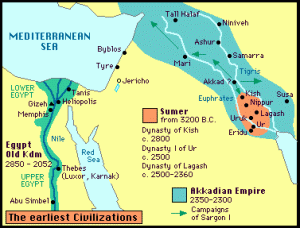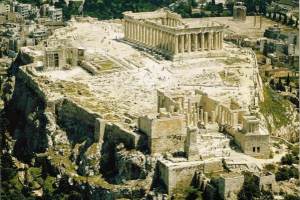Posts Tagged ‘pictures’
 Greek and Roman games are one of the little known aspects of these ancient societies.
Greek and Roman games are one of the little known aspects of these ancient societies.
In Hellenistic and Roman culture skill games were a recreational activity both for children and adults.
Since prehistoric times is possible to recognize the so-called ancestors of games and toys among the archeological finds and in the works of Hellenic and Romans artists and poets:
We know for sure that in the fifth century BC, Crater, an Athenian playwright, wrote a play dedicated to skill games.
In ancient Rome writer Suetonius wrote two different books one on Greek kids games, and the other on the Romans ones: unfortunately all these works got lost and we know only a few certain things about ancient Greek and Roman skill games.
A lot of references are traceable in the works of philosophers, poets, playwrights who, helped us to understand that in every ancient game there was a deep educational theory to help and support kids development through the use of their skills.
In the ancient Roman world the expression “nuces relinquere” (leave the nuts), meant leaving childhood and becoming adult, because nuts were used by kids to play one of the most popular skill game in ancient Rome . The nuts were used like balls and thrown to to smash other nuts, just like in the modern bowling game.
Read the rest of this entry »
- In: board games | Curiosities | Educational | History
- Leave a Comment

Egyptian gooses

Ancient Italian goose game
In 1640, a new board game called “Game of the goose” appeared for the first time.
The game of the goose was published in Venice (Italy) by Carlo Coriandoli. The first stamp of this game represents a family sitting at the table covered with food off all kind with a big roasted goose in the centre.
The name “game of the goose” probably derives from this first stamp, although many studious declare that the origin of the name comes from the particular player’s habit of using the won money to buy a big goose.
Certainly the game of the goose has ancient origins, that can be tracked down in many documents recovered in ancient Egyptian tombs.
The goose game represents in a board game the eternal struggle of good vs evil: the goose must defeat evil overcoming all the obstacles of the game.
The game board of the goose game is composed by 90 coded boxes (in the ancient one they were only 63) arranged in a spiral. The aim of the goose game is to roll the two dices and get from square 1 to square 90 before the other player. Yo do this we have to be lucky enough to avid the penalty boxes.
The goose game is very simple and it doesn’t request particular abilities, the player wins with the fortune of the dices.
The game of the goose spread quickly in all European countries and was really popular especially among literate and intellectuals. After several years the basic model of the game was reinvented and evolved in many different versions called with many different names during our history: the “owl game”, the “war game”, the “travel game”, the “train game”.
- In: board games | Curiosities | Educational | History
- 1 Comment

Knights Templars
The triple wall is the pattern of the popular board game called Nine Men’s Morris in England, Morabaraba in South Africa, Naukhadi in India, Molenspiel in Germany and Jeu de Moulin in France. The triple square symbol was find in Italy, UK, Ireland and Afghanistan and in a lot other regions of the Middle East engraved or painted in holy places for Christianity and Islam.
The aim of the Nine Men’s Morris is to form a row of three pieces along the board’s lines and leave the opposing player with no moves.
This is the playing function of this geometric concentric figure, but we can find the same pattern in ancient churches and in the Chinon tower in France, engraved on the walls by Templar Knights kept prisoners during the Middle Ages.
Some researchers suggest that this geometric draw could be the symbol of an ancient and esoteric ritual made by knights Templars.

the triple square symbol
For example, René Guénon, affirm that this symbol represent, in ancient religous rituals, a sort of holy centre where the world energies can reach the right power to involve a man’s mind on a mystic level.
The origins of the triple square are still unknown but without any reasonable doubt we can say that its symbolism is related to the centre and the balance of the world and the human spheres represented by the pieces of the game have to converge to find the perfect equilibrium.
The geometric scheme of the Nine Men’s Morris game represent the route that men have to follow to find themselves without lose the right way in unethical directions. In this sense the triple square has a manicheistic meanining deeply related to the Middle Ages religious symbolism.
God is the origin and the centre of all the universe and everything has to point in His direction; it’s clear in this interpretation the religious and ethical meaning of this symbol directly derived from the holy circle used by ancient civilizations of the far East to show the solar wheel also called the wheel of life.

Assyrian Solar Wheel
All those clues made the researchers think that the symbol of the triple square in the Middle Ages was not used as a game but as a religious symbol and only after several years this geometric pattern was used as the board of the game known with the name of Nine Men’s Morris.

The Nine Men’s Morris game derived from the triple square symbol
- In: board games | Curiosities | Educational | History | Role Games
- 3 Comments
 In 1920 British archaeologist Sir Charles Leonard Woolley, during some excavations in the Royal Cemetery of Ur in Mesopotamia, found the rests of a Royal tomb full of ancient and beautiful finds.
In 1920 British archaeologist Sir Charles Leonard Woolley, during some excavations in the Royal Cemetery of Ur in Mesopotamia, found the rests of a Royal tomb full of ancient and beautiful finds.
In this mausoleum Wodley discovered several incredibly well conserved exemplars of an ancient board game.
This artefact was called the Royal Game of Ur and was made more than 2600 years before Christ:
The Royal Game of Ur is one of the oldest board game in history and is composed by two decorated boards and two different sets of seven pieces each.
This incredible piece of game’s history is part of the British Museum’s Mesopotamia collection and was played with pyramidal dices.
Like the Faraons’ board game named Senet, the Royal Game of Ur was a race board game in which the players had to reach the other end of the board with their pieces.
This game had a mistyc power for Ancient Sumers; they believed that the dead person must play The Royal Game of Ur vs a spiritual entity in order to acess the reign of death.
This ancient Sumerian game can be played on the British Museum’s Mesopotamia website.
 The word advergame derives from the fusion of the words advertising and game.
The word advergame derives from the fusion of the words advertising and game.
Advertgames are interactive games created to broadcast commercial messages, develop the brand awareness and bring traffic to consumer oriented websites.
The advergame marketing strategy begun in USA in 1998 when the firsts advertising expert start to test an different ways to promote their partners’ products.
The goal was to find a way to reach the audience and avoid the risk of annoying them with boring messages.
And the advert game was the perfect tool for this job because of its addicting and viral nature.
Was soon clear thar Advertgames can capture the target attention and create a more involved and complex relationship. In this way people remember the games and the products and advertisers push their brands.
Brand awareness, retention, brand loyalty and all the others marketing concepts shaped advergames through these Years.
Nowadays there are different advergames categories for different types of products and markets.
the most interestings are:
- Health advergames, created to reach the cosumer and built the brand equity of a pharmaceuticals industry;
- Exergames , developed to teach the children like Disney’s Hig School Musical Dance Math;
- Healthy behaviour games, like the one sponsored by Anderson Cancer Centre in Huston, who ordered a 32 million dollars anti-smoking videogame.
This last category shows how advergames can be used by media educators to inform, entertain and teach.
Brand engagement leads, are you ready to get in the advert-game?

 The Mahjong (麻雀麻将), is a
The Mahjong (麻雀麻将), is a  Another legend attributes the invention of the Mahjong game to the great Chinese philosopher Confucius, around 500 BC.
Another legend attributes the invention of the Mahjong game to the great Chinese philosopher Confucius, around 500 BC.


 Party gamesare usually played in family or during friends’ gathering. In England people like to play party games in the pubs, for example during a quiz night contest, in USA these games are usually played during private parties and festivities and in the rest of the world in every country we can find different kinds of popular party games. Gaming is an universal language with different styles in different places but the essence and the spirit of the activity remains the same:
Party gamesare usually played in family or during friends’ gathering. In England people like to play party games in the pubs, for example during a quiz night contest, in USA these games are usually played during private parties and festivities and in the rest of the world in every country we can find different kinds of popular party games. Gaming is an universal language with different styles in different places but the essence and the spirit of the activity remains the same: In ancient Greece,
In ancient Greece,  Theseus (the player) must overcome different stages in a labyrinth scenario to fight and defeat the final Minotaur monster.
Theseus (the player) must overcome different stages in a labyrinth scenario to fight and defeat the final Minotaur monster.
Gaming comments